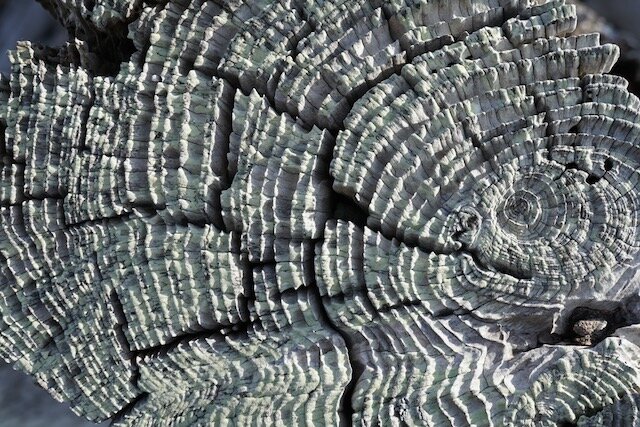
Why Did Renaissance Europeans See Merpeople Everywhere? | Lit Hub
“Europeans found all sorts of monstrous creatures in the Americas. Just as Marco Polo noted a variety of wondrous flora, fauna and creatures in his eastern travels, so too did New World explorers like Sir Walter Raleigh and Christopher Columbus claim to interact with everything from headless men to cyclops to the cynocephalus.”

Your Friendly Neighborhood Inoculator | Lapham's Quarterly
“Daniel Sutton's book is a remarkable account of a clinician scientist at work. His many detailed observations and experiments may be unique in 18th century medicine. His investigation of the role of the skin in inoculation is one of the very first systematic studies of the pathogenesis of a disease process. Yet no one remembers him. Sutton made a serious mistake by publishing his book too late. He procrastinated.”
Boylston A. (2012). Daniel Sutton, a forgotten 18th century clinician scientist. Journal of the Royal Society of Medicine, 105(2), 85–87. https://doi.org/10.1258/jrsm.2012.12k001

Scientists Use Seaweeds to Travel Back in Time | Hakai Magazine
“In a new study published this past June, researchers from the Monterey Bay Aquarium examined a collection of dried, pressed seaweeds—dating back over 140 years—to learn what ocean conditions in the bay were like in the early 19th century.”

How Algorithms Discern Our Mood From What We Write Online | Knowable Magazine
“The Hedonometer is a relatively recent incarnation of a task computer scientists have been working on for more than 50 years: using computers to assess words’ emotional tone. To build the Hedonometer, UVM computer scientist Chris Danforth had to teach a machine to understand the emotions behind those tweets — no human could possibly read them all. This process, called sentiment analysis, has made major advances in recent years and is finding more and more uses.”

The Paris Morgue Provided Ghoulish Entertainment | JSTOR Daily
“The writer and photographer Maxime Du Camp wrote that “the kids, who go there as they would to a theatrical representation, call the exhibited corpses the artists, if the exhibition room happens to be empty, they say: The theater is temporarily closed today.”

When Math Gets Impossibly Hard | Quanta Magazine
“Mathematical impossibility is different. We begin with unambiguous assumptions and use mathematical reasoning and logic to conclude that some outcome is impossible. No amount of luck, persistence, time or skill will make the task possible. The history of mathematics is rich in proofs of impossibility. Many are among the most celebrated results in mathematics. But it was not always so.”

Primary Sources/ A Natural History of the Artist's Palette/The Public Domain Review
“For all its transcendental appeals, art has always been inextricably grounded in the material realities of its production, an entwinement most evident in the intriguing history of artists' colours. Focusing in on painting's primary trio of red, yellow, and blue, Philip Ball explores the science and stories behind the pigments, from the red ochre of Lascaux to Yves Klein's blue.”

Cracking a Rembrandt Mystery | Cosmos Magazine
“The Ashmolean museum in Oxford recently announced that a portrait by Rembrandt, long thought to be a fake created after his death, was indeed an authentic work by the Dutch master. The announcement came after a study of the portrait’s wood panel.”

Mummies Among Us | Aeon
“For most of the history of European collection of mummies, the primary thing Europeans did with them was grind them up. At first, Europeans ate them – mummies were considered a drug. ‘Mummie is become Merchandise, Mizraim cures wounds, and Pharaoh is sold for balsams,’ as Browne wrote.”

A Short History of Aquaculture Innovation | Hakai Magazine
1924
“By the 1970s, researchers had devised a solution: sex reversal technology, which produced all-male populations through hormone manipulation. (Males were preferred because they grow faster.) This advancement was one of several that facilitated the growth of the tilapia industry. “

Galileo the Artist | Nature
“As a young man, Galileo Galilei considered becoming a painter.”

The Pioneering Surgeons Who Cleaned up Filthy Hospitals | BBC
“Lister is often referred to as the father of modern surgery, because he laid the foundations for future surgical and operative care – to think that such a step change in surgery occurred in the hospital where I work is phenomenal.”

Butterflies: How Two 19th-Century Teenage Sisters’ Forgotten Paintings Sparked a Triumph of Modern Conservation | Brain Pickings
... these drawings are equal to any I have ever seen by modern artists ... every tuft of hair in the caterpillar, the silken webs of the cocoon, or the delicate and often intricate pencillings on the wings of a moth, stand out with a prominence of relief which it is perfectly impossible to reproduce by simple water colours...

Alfred Wegener and the Continental Drift | COSMOS | Jeff Glorfeld
“Wegener expanded this “debunked” hypothesis in 1915 into what NASA calls “one of the most influential and controversial books in the history of science: The Origin of Continents and Oceans”.”

Waking Life | Laphams's Quarterly
““Perhaps it would have ended up there anyway. Sharing many of the foibles and fallacies of early psychology, The Psychology of Day-Dreams is far from perfect. Centered and based on the experience of a white male not only in war but also in life writ large, it could be said that his theories discounted and excluded many. “

Why the First Drawings of Neurons Were Defaced | Quanta Magazine | 2017
“Now it is horrible, but at this time in history it was not,” Toledano said. “In the National Library and in the universities at the time, this was normal. The most important thing was that the stamp was placed in the center of the page of the books and the drawings and so on.”

Claude Bernard | French Physiologist | 1813-1878
“Reasoning will always be correct when applied to accurate notions and precise facts; but it can lead only to error when the notions or facts on which it rests were originally tainted with error or inaccuracy. That is why experimentation, or the art of securing rigorous and well-defined experiments, is the practical basis and, in a way, the executive branch of the experimental method as applied to medicine.”

Sarah Frances Whiting and the “Photography of the Invisible” | Physics Today
““Near the end of her career, she reflected on “the somewhat nerve-wearing experience of constantly being in places where a woman was not expected to be, and doing what women did not conventionally do.”

James Watt and the Steam Engine: the Dawn of the Nineteenth Century
“…in short, I can think of nothing else but this machine.” James Watt in a letter to James Lind about his invention.

On the Great and Terrible Hurricane of 1938 | Lit Hub
“Forecasts possess no intrinsic value. They acquire value through their ability to influence the decisions made by users of the forecasts”.
Allan H. Murphy, Wea. Forecasting (1993) 8 (2): 281–293.